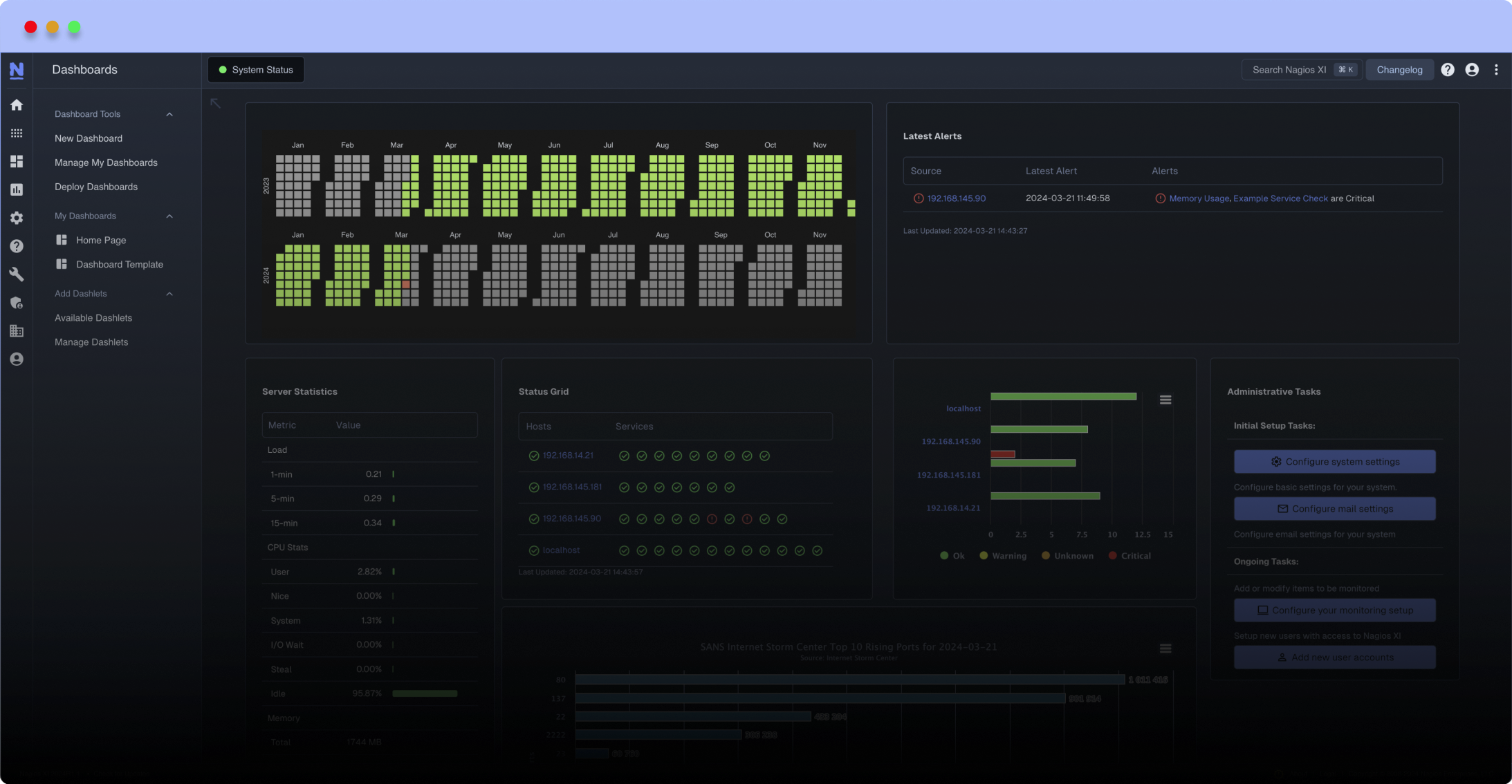Search Exchange
Search All Sites
Nagios Live Webinars
Let our experts show you how Nagios can help your organization.Login
Directory Tree
check_sas2ircu
Compatible With
- Nagios 2.x
- Nagios 3.x
Owner
License
GPL
Hits
101541
Files:
| File | Description |
|---|---|
| check_sas2ircu | check_sas2ircu |
Meet The New Nagios Core Services Platform
Built on over 25 years of monitoring experience, the Nagios Core Services Platform provides insightful monitoring dashboards, time-saving monitoring wizards, and unmatched ease of use. Use it for free indefinitely.
Monitoring Made Magically Better
- Nagios Core on Overdrive
- Powerful Monitoring Dashboards
- Time-Saving Configuration Wizards
- Open Source Powered Monitoring On Steroids
- And So Much More!
Reviews (3)
byjohertojn, February 23, 2017
Copy the file over
chmod u+x /usr/lib64/nagios/plugins/check_sas2ircu
run "visudo"
Add the following lines at the bottom:
## Allow nrpe to check SAS arrays
nrpe ALL=(ALL) NOPASSWD:/usr/lib64/nagios/plugins/check_sas2ircu
Hash out this line in the same:
#Defaults requiretty
Copy the file or vi contents to /usr/lib64/nagios/plugins/check_sas2ircu
Add the following line to /etc/nrpe.d/nrpe.cfg
command[check_sas2ircu]=/usr/bin/sudo /usr/lib64/nagios/plugins/check_sas2ircu
chmod u+x /usr/lib64/nagios/plugins/check_sas2ircu
run "visudo"
Add the following lines at the bottom:
## Allow nrpe to check SAS arrays
nrpe ALL=(ALL) NOPASSWD:/usr/lib64/nagios/plugins/check_sas2ircu
Hash out this line in the same:
#Defaults requiretty
Copy the file or vi contents to /usr/lib64/nagios/plugins/check_sas2ircu
Add the following line to /etc/nrpe.d/nrpe.cfg
command[check_sas2ircu]=/usr/bin/sudo /usr/lib64/nagios/plugins/check_sas2ircu
bydrochecfri, November 17, 2016
LSI got bought out by Avago, and now you can't easily find a copy of the sas2ircu utility that this script relies on. I found a link to version 20.0.0.0 that's hosted by Supermicro after reviewing an example RPM spec file that I found online. This utility can also monitor Dell PERC H200i adapters which is nice. It requires being run as root, so you'll need to ensure you add a sudoers exception or selinux hash to allow passwordless running of the script by whatever user is running your nrpe process.
You may need to modify the following lines in the script to point to your sas2ircu path and utils.pm path. The lines to change are as follows and include changes I made for my own os CentOS7.
use lib qw(/usr/local/lib/nagios/plugins /usr/lib/nagios/plugins /usr/lib64/nagios/plugins);
my $sas2ircu = '/usr/sbin/sas2ircu';
You may need to modify the following lines in the script to point to your sas2ircu path and utils.pm path. The lines to change are as follows and include changes I made for my own os CentOS7.
use lib qw(/usr/local/lib/nagios/plugins /usr/lib/nagios/plugins /usr/lib64/nagios/plugins);
my $sas2ircu = '/usr/sbin/sas2ircu';
byclaudio.db, December 12, 2012
when I start the script I get as output This program must be run as root. You may use wrappers like sudo to do this.
how can I do to solve this puzzle?
how can I do to solve this puzzle?


 New Listings
New Listings